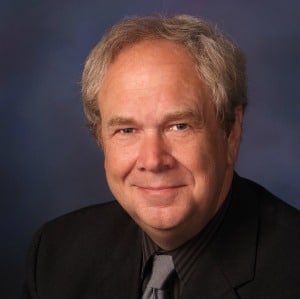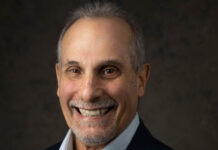
Bryan Broadcasting’s Ben Downs is a champion for AM Radio. For years he’s been trying, along with others, to solve the noise issues that plague the AM band. His plan to get the FCC to allow AM stations to go all-digital is gaining steam. The Commission has issued a Notice of Proposed Rulemaking and the item will come up at the Commission’s meeting on November 19. The big question with AM Radio will always be, is it too late?
Radio Ink: How long have you been working on this and why is it important to AM operators?
Ben Downs: This all-digital option is just a piece of the AM Revitalization puzzle that’s been underway for some time. I began working with the FM translator issue back in 2013. The idea of assigning an FM translator to every AM station permanently was very new then. But an even longer shot was the idea of AM converting to all-digital. On June 30, 2018 Hubbard applied for an experimental license to broadcast in all-digital on WWFD. This was after extensive all-digital system testing by NAB Labs and David Layer.
Then in March of this year, our company filed a Petition for Rulemaking that asked the FCC to allow AM stations to voluntarily convert to all-digital. All the digital testing that had been done truly had been done, and the results were considered a success. I felt like it was time to change the rules on the books and let AM operators make this choice straight up. It’s been very exciting to see how quickly the FCC has moved on considering this option for AM operators.
Radio Ink: If approved what will this actually mean to the sound of AM Radio? Wouldn’t you agree right now it’s pretty much unlistenable when you have so many other crystal-clear options?
Ben Downs: For years, every AM operator I know has despaired because of the overwhelming noise on the AM band. That noise is a part of our modern technology. It comes from our phone chargers, computers, cell phones, flat screens, lights, and power lines. Even before the noise floor kept getting higher, the audio quality of radio receivers was plummeting. This all-digital system fixes both of these problems. It is immune to the noise and hash on the AM band, and the HD radio receivers in the home and in cars have audio quality far superior to the AM radios we’re used to hearing.
As we know, the AM Hybrid Digital system is currently available, but it was always designed as a way to bridge the gap between analog and digital. It uses much more bandwidth which resulted in many stations ultimately turning it off. And the hybrid signal is more fragile than this all-digital version. The hybrid system that’s currently allowed by the FCC is a much less robust way to do AM Digital than the all-digital version we’ve asked the FCC to authorize.
But here’s the part that most people don’t know. While the all-digital is new to broadcasters, it is an old friend to HD radio. Every HD radio sold from the start will pick up this all-digital signal. It is fully compatible. To an AM operator considering converting, this means there are nearly 60 million receivers on the road already. Xperi says that 18-25%
Radio Ink: Specifically, what does the NPRM from the FCC mean and what happens next?
Ben Downs: Today, before an operator could go all digital, they would have to ask for an experimental license like WWFD did. Those licenses have to be renewed annually and don’t allow the station to run commercials. The NPRM would make AM all-digital a permitted and authorized way to broadcast. The draft proposal we’ve read makes this a voluntary conversion and asks a good number of questions about setting technical standards. The FCC will vote on it at their next open meeting on November 19, at which time the public can make comments. Then, we’ll see what comes out.
Nobody thinks this is the right answer for every AM station. Daytime AMs will still get the biggest boost from their translators, not all-digital operation. But it will be the right answer for many AM stations and that’s why we wanted them to have this option.
Radio Ink: What is your opinion on the band-aid the FCC put on the AM issue with the FM translators?
Ben Downs: For stations in the small and medium markets, it’s what AM stations needed to compete. Translators won’t solve all the problems since having a translator doesn’t mean you can’t make a stupid programming decision. What it does mean is an AM operator can compete on an equal footing with other FM stations. On AM, we’ve pretty much been limited to talk of one kind or another. But now, an operator can actually evaluate a market for programming holes and then develop programming to fill them no matter the format.
In a small to medium market, there’s a much better chance of finding a space for a translator, and if you engineer it aggressively you can most likely provide coverage to your entire market. But neither of those benefits are available in major markets. An open frequency is a unicorn in the top 50 markets and there’s no tower tall enough to cover Houston with 250 watts.
Radio Ink: How can AM radio survive in the long run?
Ben Downs: The room for error with an AM is a lot less than a major market Class C. But for the first time, AM operators can begin looking at new and unique programming options without worrying about the noise and inferior sound coming out of the kitchen radio.
AM radio found itself severely limited by its technology. The AM band is where all the noise in the modern world gathered and the quality of the AM receivers declined to a point where they just couldn’t get much worse. We now have a bunch of new tools. But operators will have to be creative. An all-digital AM with 24-hour coverage can program anything and have it sound crystal clear. The engineering will be competitive, but the programming must be competitive also.
Like everything else, you can’t make poor choices. Programmers will be faced with new questions, but for the first time they have access to new answers. Do I continue to broadcast talk or sports on my station that has an FM component? Would a mass appeal music station work, now that I have an FM or a 100% digital AM? After all, Rush and Sean will retire some day. But there’s still a tough decision to make: which is the best chance to take: program to the 25% that have digital-capable radios or take a chance with the 10% who will still listen to AM for music. Dave Kolesar with WWFD made the choice to run a unique music blend in all-digital on an AM station. And for the first time in a long time they are seeing their ratings trend upward. New music on an AM station — a brave new world with such stations in it.
Reach out to Ben by e-mail at [email protected]
Read the entire 34-page NPRM HERE.






I love AM radio and think the digital option could be attractive. However, I don’t want to see a majority of AM listeners disenfranchised. The solution is to come up with a plan that incorporates both AM digital and analog signals.
The iBiquity digital radio scheme for AM ignores the laws of physics. The phase shift associated with skywave propagation results in poor decoding of the digital component. Drinking the digital Kool-Aid will not save AM radio. It will flop as AM stereo did in the 1980s.
Three things need to happen in order for AM to become viable:
1. The manufacturers of radios need to improve the AM section of their receivers. Poor sensitivity and lousy audio response are not going to entice listeners back to the AM band.
2. The FCC needs to tighten up the restrictions on RF noise emitted by Part 15 and Part 18 devices.
3. The AM broadcasters need to put on decent programming. Infomercials for quack medicines and devices, questionable real estate deals, dollar a holler brokered shows, and other garbage clogging the band will not attract listeners. Play music that the FM stations won’t touch and gear yourselves to older listeners.
I wish the broadcasters would go to the FCC and persuade them to require car radio manufacturers to provide a minimum benchmark for reception quality. Right now, AM car radios can be as bad as listening to a phone call on a cellphone speaker. Younger people don’t realize that AM radio can sound pretty good if the receiver is good – and if the radio offers a wide band reception option – like Blaupunkt once did. (If millennials are OK listening to their laptop and cellphone speakers – they are not obsessed with audio fidelity). Also, AM bandwidth should also be improved/restored. Thanks for this article!!
Ben, the problem with your proposal is that it makes entirely too much sense, it’s altogether too reasonable. How can a governmental body entrusted with implementing and enforcing America’s communications law and regulations be expected to agree with a proposal that offers such promise to resolve the demise of AM broadcasting in major markets (in particular)? But, then again, perhaps there is a glimmer of a chance given the current FCC’s stated strategic goals: Closing the Digital Divide; Promoting Innovation; Protecting Consumers & Public Safety; and Reforming the FCC’s Processes. If the FCC Chairman and Commissioners hew to their stated goals, they should readily approve your company’s proposal. Then it will be up to the major market…AM’s to take advantage of the opportunity to implement the all-digital option. Which brings us back to Do Re Mi Fa So La Ti Do; what will the terribly clever major radio broadcasting network’s and others’ executives…do with their new-found crystal-clear-transmitting “saved” AMs? Perchance they will follow suit with Entercom and iHeartMedia and promote the soul-destroying sodomite agenda; the ghettoization of America; the dumbing down of America; and various other corrupting, degrading influences to the dire detriment of this nation and world.
The big hurdles include the radio manufacturers, retailers, auto manufactures, and the willingness for the consumer to either buy a new radio or pay for an upgrade in their car radio that already include Pandora and more. Most AM stations are currently streaming their programming. Right now there are digital radios in the marketplace such as the Ocean Digital WR-26 which give Internet radio streams a traditional radio look, sound, and feel for around $50. AM stations on those radio sets sound like FM stations and you can buy them on Amazon today. Those type of receivers have a better chance to be accepted by consumers than a brand new radio ecosystem. Upcoming advances in 5G and WiFi 6 in the next few months will continue to push the marketplace toward the Internet which today is being promoted by nearly every OTA radio station that has a stream. All-digital AM will go by the wayside along with AM stereo and AMAX. BTW…how many AMAX certified AM receivers have you ever seen in your career? Yep…that’s where this one is going.
The sad part about radio is Millennials don’t use it. They don’t know the stations and music they’re playing and don’t know the frequencies that they’re at. A lot of radio stations are sounding more and more automated. I feel this is when they should be doing the opposite they should become crazy wild radio. stations should be something people are talking about weird funny DJ’s that’s what they need. Who’s going to just listen to a radio station now with all the commercials when they don’t have to. Make it something listeners really want to hear.
In a way, some of these steps have already been done for AM radio when stereo was introduced several years ago. For the most part, it failed miserably. Today, with much more competition and other digital platforms available, the hill is too steep to climb.